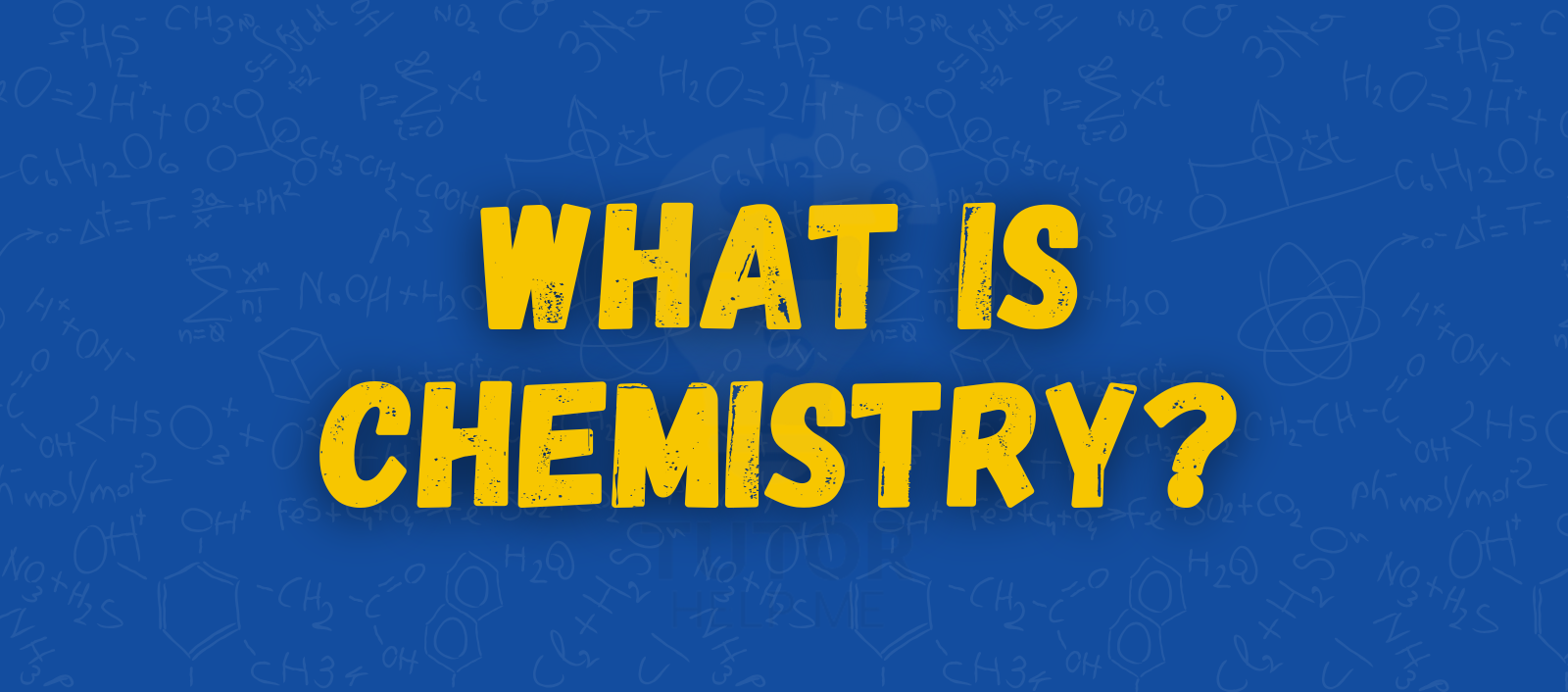Chemistry is the study of matter and how it changes. It helps us understand things like why metal rusts or how medicine works.
People call Chemistry the “central science” because it links to other subjects like physics, biology, and earth science.
Scientists use Chemistry to make new materials, better medicine, and new ways to get energy.
In this guide, we will look at the types of Chemistry and why they are useful in everyday life.
What Is Chemistry?
Chemistry is the science of what things are made of and how they change. It looks at atoms, molecules, and reactions.
Why Is Chemistry Important?
-
It explains changes like water turning to ice or metal rusting.
-
It helps make new medicine, fuels, and materials.
-
It helps us make better food, cleaning products, and technology.
Examples of Chemistry
- Cooking: Baking bread is a chemical change.
- Medicine: Painkillers are made using Chemistry.
- Cleaning: Soaps break down dirt with chemical reactions.
What Are the Main Branches of Chemistry?
Chemistry is divided into different branches, each focusing on a specific type of matter and its interactions. These fields help scientists understand materials, develop medicines, and create new technologies.
Organic Chemistry
Organic Chemistry is the study of carbon-containing compounds and their structure, properties, reactions, and synthesis.
Focus: Carbon and hydrogen compounds.
Examples: Plastics, fuels, and medicine.
Common Reaction: Combustion (e.g., burning hydrocarbons).
Application: Used in Health, farming, and making new materials.
Inorganic Chemistry
Inorganic Chemistry studies elements and compounds that do not contain carbon-hydrogen bonds, such as metals, salts, and minerals.
Focus: Metals, salts, and rocks.
Examples: Salts and ceramics.
Common Reaction: Metal displacement reaction (e.g., Zn + CuSO₄ → Cu + ZnSO₄).
Application: Used in construction, machines, and tools.
Physical Chemistry
Physical Chemistry examines how matter behaves at a molecular level and how chemical reactions involve energy changes.
Focus: Heat, speed of reactions, and energy.
Examples: Heat transfer, phase changes, and reaction rates.
Common Concept: Gibbs Free Energy (ΔG) determines whether a reaction is spontaneous.
Application: Used inBatteries and tiny machines.
Analytical Chemistry
Analytical Chemistry involves identifying, separating, and quantifying substances in different materials.
Focus: Testing and measuring.
Examples: Lab tests and clean water checks.
Common Method: Mass spectrometry for molecular identification.
Application: Used in forensics, drug testing, and environmental analysis.
Biochemistry
Biochemistry studies chemical processes and molecular interactions within living organisms.
Focus: Proteins, DNA, enzymes, and metabolism.
Examples: Cellular respiration, enzyme activity, and genetic coding.
Common Concept: Lock and Key Model for enzyme-substrate interactions.
Application: Used in medicine, biotechnology, and genetic research.
Theoretical Chemistry
Theoretical Chemistry uses mathematical models and simulations to predict chemical behaviour and reaction mechanisms.
Focus: Quantum Chemistry, molecular modelling, and computational simulations.
Examples: Electron orbitals, molecular dynamics, and reaction pathways.
Common Concept: Schrödinger’s Equation in quantum mechanics.
Application: Used in drug design, nanotechnology, and material science.
Industrial Chemistry
Industrial Chemistry applies chemical principles on a large scale to manufacture useful products.
Focus: Chemical processes, large-scale production, and material development.
Examples: Fertilisers, petrochemicals, and synthetic fibres.
Common Process: Haber Process for Making ammonia in factories.
Application: Used in agriculture, pharmaceuticals, and consumer goods.
How Is Chemistry Divided Into Different Branches?
Chemistry is a vast field that covers different aspects of matter, reactions, and energy. To make it easier to study, scientists divide Chemistry into different branches, each focusing on a specific area.
Why Are There Different Branches of Chemistry?
- Matter exists in many forms, so Chemistry studies different types of substances.
- Some chemists study living systems, while others focus on metals, gases, or chemical reactions.
- Specialised fields help scientists develop medicines, materials, and energy solutions.
How Do the Branches of Chemistry Overlap?
While Chemistry is divided into separate branches, they often work together in real-world applications. Scientists use knowledge from multiple fields to develop new materials, medicines, and industrial processes.
Organic and Biochemistry
🔹 Connection: Both study carbon-based compounds.
🔹 Example: Pharmaceuticals use organic molecules to create medicines that affect biochemical processes in the body.
🔹 Application: Used in genetics, drug development, and metabolism research.
Analytical and Environmental Chemistry
🔹 Connection: Analytical Chemistry helps measure pollutants in the environment.
🔹 Example: Gas chromatography is used to detect air pollution.
🔹 Application: Helps in climate studies, pollution control, and water purification.
Inorganic and Industrial Chemistry
🔹 Connection: Industrial Chemistry produces inorganic materials like metals, catalysts, and fertilisers.
🔹 Example: The Haber process (ammonia production) uses inorganic compounds for fertilisers.
🔹 Application: Used in manufacturing, construction, and agriculture.
Physical and Theoretical Chemistry
🔹 Connection: Theoretical Chemistry predicts chemical behaviours, which Physical Chemistry tests.
🔹 Example: Quantum Chemistry helps explain bonding and reaction rates.
🔹 Application: Used in nanotechnology, material science, and energy research.
Why Is Chemistry Important in Everyday Life?
Chemistry is everywhere. It explains how things work, change, and react in daily life. From the air we breathe to the food we eat, Chemistry plays a key role in health, technology, and the environment.
Chemistry in Medicine
- Medicines work because of chemical reactions in the body.
- Vaccines, antibiotics, and painkillers are all developed through Chemistry.
- Hospitals use anaesthetics and disinfectants to save lives.
Chemistry in Food
- Cooking is a chemical process. Heat changes the structure of food.
- Preservatives help keep food fresh for longer.
- Nutrition labels show how different nutrients react in the body.
Chemistry in Cleaning
- Soaps and detergents use chemical properties to remove dirt.
- Toothpaste contains fluoride, which reacts with enamel to prevent decay.
- Disinfectants kill germs by breaking down their cell walls.
Chemistry in the Environment
- Chemistry helps scientists monitor pollution and find solutions.
- Water purification removes harmful chemicals to make water safe.
- Renewable energy sources, like solar panels, work through Chemistry.
Read more Electron Configuration ( All you need to know )
FAQ’s
Is water an organic or inorganic compound?
Water is inorganic because it lacks carbon-hydrogen (C-H) bonds, even though it is essential for biochemical reactions.
Can Organic Chemistry exist without Carbon?
No, Organic Chemistry is defined by carbon-based compounds, but some carbon-containing substances like carbonates (CO₃²⁻) and cyanides (CN⁻) are classified as Inorganic Chemistry.
Why do some inorganic compounds behave like organic compounds?
Some inorganic compounds, like silicones (Si-based polymers), mimic organic molecules in structure and behaviour because silicon is chemically similar to carbon.

